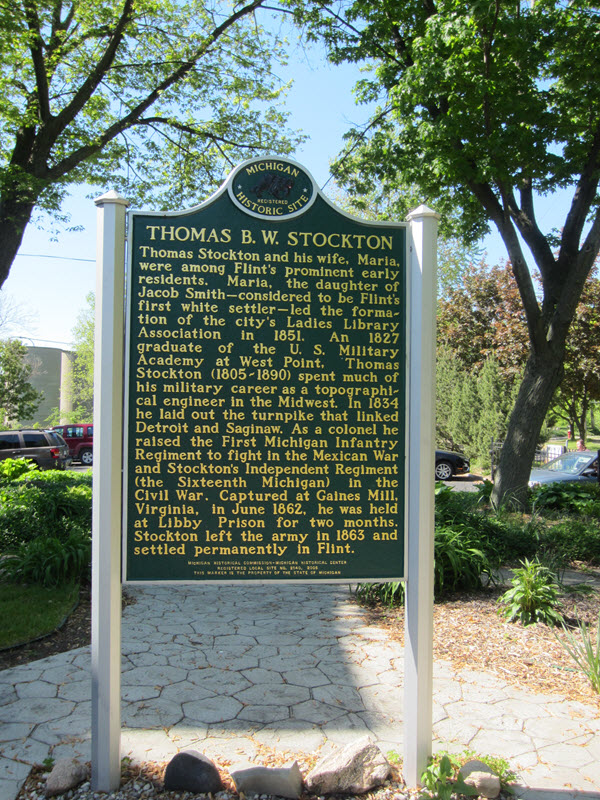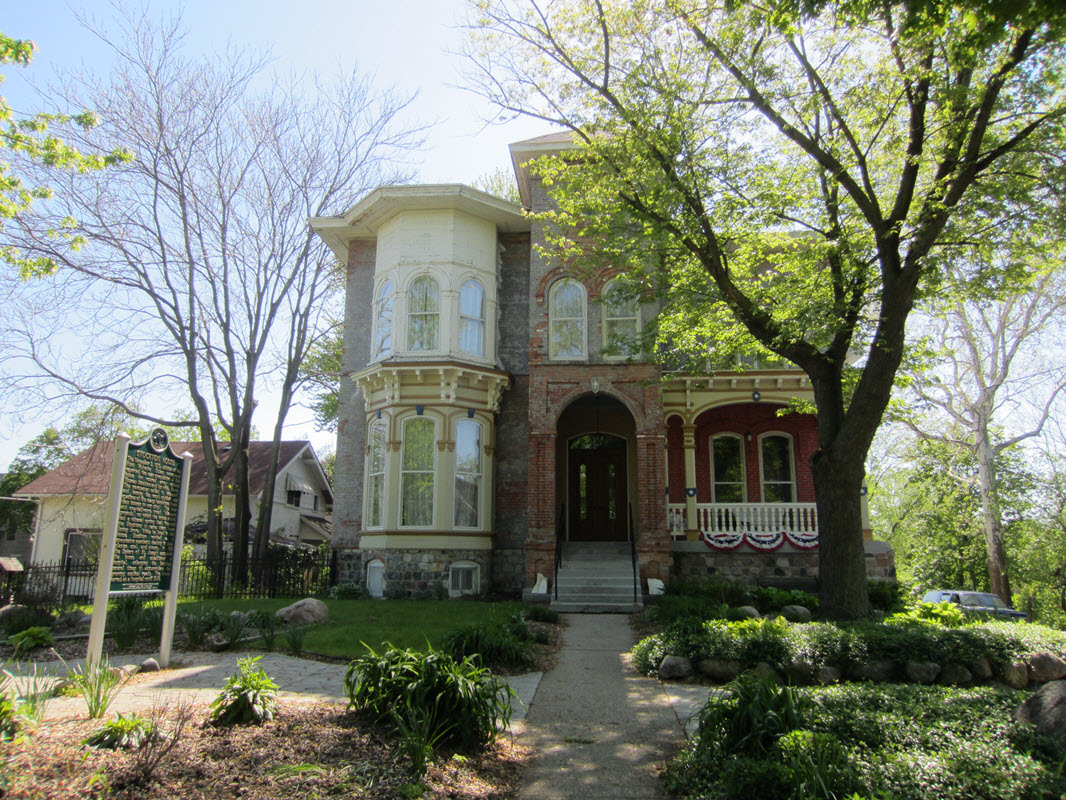Stockton House / Thomas Stockton
The November 9, 1872, edition of the Flint Wolverine Citizen newspaper reported the near completion of this house for retired army colonel Thomas Stockton and his wife, Maria. The newspaper called it "elegant" and "among the most stylish and spacious of the many first-class houses in our city." The four and one-half-acre treed "pleasure grounds" on which the house stood, had a mineral spring that inspired the Stocktons to name their home Spring Grove. While he lived in this house, Stockton worked as a commission merchant dealing in lime, plaster, coal, and stucco. In 1921 the Sisters of St. Joseph acquired the house and established a hospital, enlarging the building several times to accommodate the growing medical needs. The house served as a hospital until 1936.Thomas Stockton and his wife, Maria, were among Flint's prominent early residents. Maria, the daughter of Jacob Smith ~ considered to be Flint's first white settler ~ led the formation of the city's Ladies Library Association in 1851. An 1827 graduate of the U.S. Military Academy at West Point, Thomas Stockton (1805 - 1890) spent much of his military career as a topographical engineer in the Midwest. In 1834 he laid out the turnpike that connected Detroit and Saginaw. As a colonel he raised the First Michigan Infantry Regiment to fight in the Mexican War and Stockton's Independent Regiment (the Sixteenth Michigan) in the Civil War. Captured at Gaines Mill, Virginia, in June 1862, he was held at Libby Prison for two months. Stockton left the army in 1863 and settled permanently in Flint.

Plaque via Michigan History Center